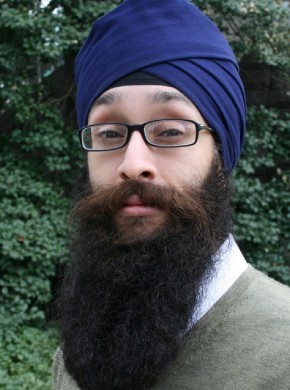(RNS) Shortly after teenagers beat up a Columbia University physician Saturday (Sept. 21), a Muslim woman was attacked a few blocks away.
It is not clear whether the attacks on Dr. Prabhjot Singh and the Muslim woman, who were both treated at Mount Sinai Hospital in New York, are related. But many say the motives, if not the perpetrators, are depressingly familiar.
They are part of a long line of assaults on Sikhs, who are sometimes mistaken for Muslims; on Muslims; and, more generally, on people perceived as foreigners.
Valerie Kaur, a Sikh American and founder of the interfaith group Groundswell, believes the reasons behind attacks go beyond religion.
“Turbaned Sikh men are often at the forefront of hate violence on the ground. But that does not mean that all cases are ones where Sikhs are ‘mistaken’ for Muslims,” she said. “We believe the deeper issue is that people with brown skin, beards and/or turbans are often not seen as fellow Americans.”
Omid Safi, an Islamic studies professor at Duke University, wrote that describing the incident as a case of “mistaken identity” holds the danger of assuming that the attack would have been OK had the victim been Muslim. “There is no such thing as a properly directed hate crime,” Safi wrote.
Earlier this month, Stanford University researchers released a study, “Turban Myths,” showing that although almost all turban-wearers in America are Sikh, about 70 percent of Americans misidentify turban-wearers as Muslim, Hindu, Buddhist or Shinto. The survey, sponsored by the Sikh American Legal Defense and Education Fund, also found that nearly half of Americans believe “Sikh” is a sect of Islam, and more associate the turban with Osama bin Laden than with Muslim and Sikh alternative.
Sikhism is a monotheistic religion revealed to Guru Nanak in the 16th century in the Punjab region of modern-day India and Pakistan. Today, Sikhism is the fifth-largest religion in the world, with more than 25 million followers, most living in India, and about 500,000 in the United States.
The weekend assault is the latest in a long line of attacks on Sikhs, of which the most notorious occurred Aug. 5, 2012, when Wade Michael Page killed six people at a Sikh temple in Oak Creek, Wis.
Singh was seeing patients two days after being released from the hospital. On Saturday night the university professor found himself surrounded by 15 to 20 male teens on bikes near his office at the School of International and Public Affairs, where he is an assistant professor.
Some of the teens called him “Osama” and “terrorist” and started tugging his beard, trying to pull off his turban.
It happened so fast, Singh said, he didn’t have time to react or talk with the teens. A few witnesses chased the attackers, giving Singh, 31, a chance to flee. He suffered bruising, swelling, loose teeth and a fractured jaw that had to be wired.
Jasjit Singh, executive director of the Sikh American Legal Defense and Education Fund in Washington, D.C., worries that one decade after the 9/11 terrorist strikes, teens are still so prejudiced.
“As a society, we are failing when we are producing youth like this,” said Singh, who is not related to the university professor.
Whatever the reasons behind the attacks, some observers say the shared experience has brought Sikhs and Muslims closer.
“We have seen a greater sense of shared struggle and solidarity among Sikh and Muslim Americans in the last 12 years,” said Kaur. As an example, she pointed to a successful effort last year in which a multifaith and multiracial coalition supported a campaign by Sikh groups to persuade the federal government to track hate crimes against Sikhs, Hindus, Arabs and other minority communities.
Ironically, the Columbia professor also advocated for the change and wrote an editorial in The New York Times supporting it.
“His attack will likely be classified in the new category he helped create,” said Kaur.
At a news conference Monday sponsored by two Sikh civil rights groups, the Columbia professor said the best way to prevent future attacks is through education and developing a community where people feel comfortable enough to engage one another.
“I want to live in a community where someone feels comfortable asking, ‘Hey, what’s on your head? Why do you have that beard? What are you doing here? Are you American?’” said Singh. “I think we should be able to ask those questions.”





